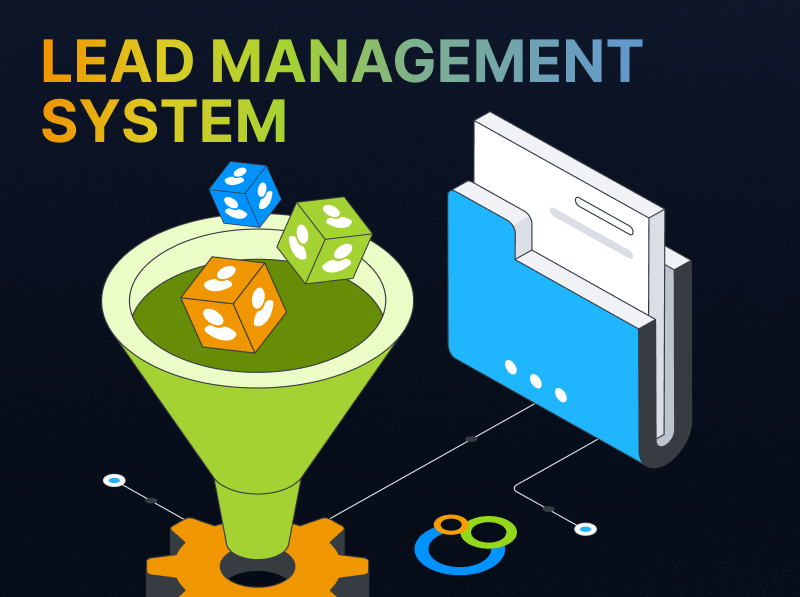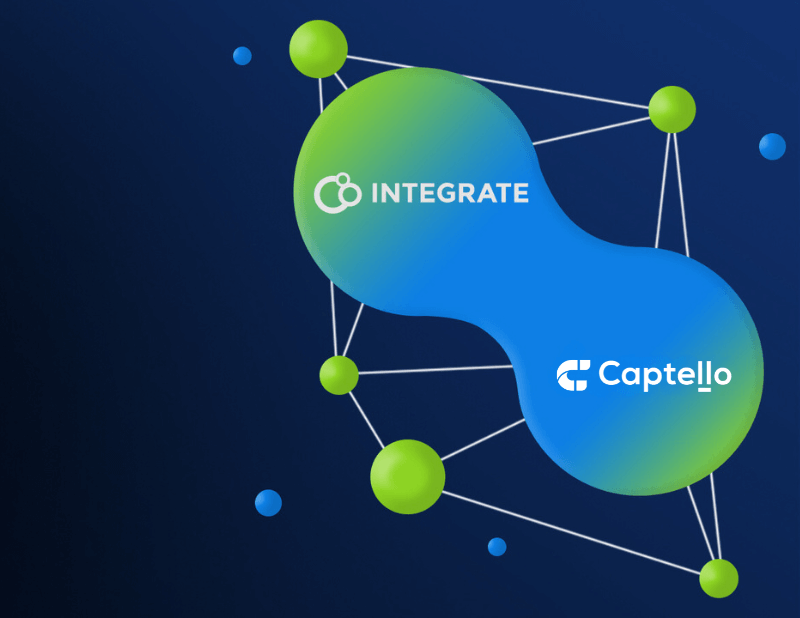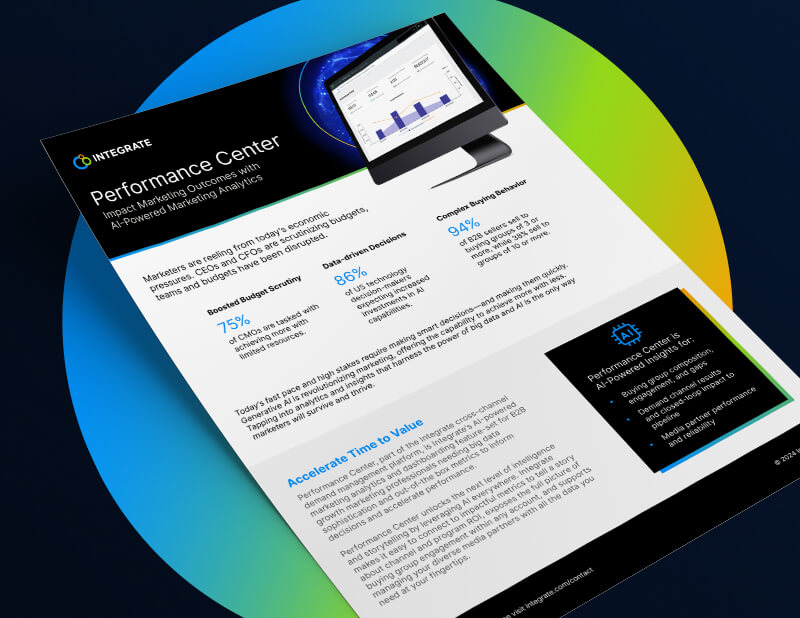What Is Lead Management?
Leads are the lifeblood of your sales pipeline and revenue. However, you must manage those leads with care, otherwise they won’t convert into customers. Lead management is the art of shepherding leads from the top of the funnel all the way through conversion to paying customer, maximizing the impact of each touchpoint, and improving your overall marketing efficiency.
Not sure what lead management is or how it works? In this guide, we’ll explore what it is, what you need to know about implementing a lead management process, and tips for effective sales lead management within your organization.
Lead Management: What Is It?
Before we dive too deep into the discussion, let’s define the topic. What is lead management? Mailchimp defines it as “an umbrella term for a variety of processes and methods specifically aimed at finding, gaining, converting, and building relationships with leads.” That helps, but it’s not really all that clear.
Adobe has a slightly better definition: “a series of steps to analyze data about leads to decide how likely they are to make a purchase and keep track of when leads become customers.” However, that falls short of the reality.
Gartner’s Glossary has perhaps the best definition. “Lead management is the process of:
- Identifying and capturing potential customers
- Tracking their activities and behaviors,
- Qualifying prospects,
- Giving them constant attention to make them sales-ready,
- Passing them on to the sales team.”
From this definition, you can see that lead management begins with lead generation (and it’s often lumped into lead generation activities). It follows each lead throughout their journey, hopefully culminating with a successful sale.
Why Is Lead Management Important?
Why does lead management matter? It’s the backbone of the marketing and sales process.
By implementing sales lead management, you take control of the lead engagement process. Instead of a roll of the dice, you begin collecting qualified leads who align with your target personas and then walk them through the customer journey. It’s about improving efficiency (less wasted time and money) and accuracy (higher quality leads and more conversions).
Lead management can benefit both your organization and your customers.
Lead Management Benefits for Your Organization
- Operational Efficiency: Streamline your processes and implement automation available to reduce manual work and human error. This empowers your team to manage more leads with fewer resources and reduce risk.
- Improved Marketing ROI: Lead management boosts conversion and reduces the expenses incurred by marketing to the wrong leads, improving profitability and closing more sales.
- Better Sales and Marketing Alignment: Shared lead qualification criteria and seamless handoffs can improve alignment and collaboration.
Lead Management Benefits for Your Customer
- Personalized Customer Experience: You only send relevant information to leads, helping to improve their experience and ensure that you’re not annoying them with irrelevant content or too much content.
- Quicker Response Times: Your customers get fast responses and follow-up, which builds trust and positive brand sentiment.
- Simpler Buying Experience: Buying software isn’t easy: it’s time consuming and complicated. Getting the right resources to your customers guides them through the buying process, reducing stress and frustration.
Those are important advantages that can benefit any organization and prospect. However, you’ll need to know more about the lead management process and the stages it follows so you can implement it accurately.
What Are the Stages of Lead Management?
The lead management process is broken down into seven specific stages:
- Lead Capture: Use forms, events, landing pages, and other methods to capture leads.
- Lead Qualification: Use a qualification process to ensure that only relevant leads move forward.
- Lead Tracking: Monitor leads as they interact with your business across multiple channels.
- Lead Distribution: Match leads with the most suitable people on your team to ensure relevance and impact.
- Lead Nurturing: Support the lead in their journey at each touchpoint with relevant information.
- Lead Conversion: Hand the lead off to sales for a successful conversion into a customer.
The right tools and processes are critical to support the lead management strategy.
By this point, you probably clearly see the role of lead management. But who within your organization needs it?
Who Needs Lead Management?
Who benefits most from implementing a sales lead management process? Marketing operations (MOPs) and demand generation teams are the most obvious ones. Sales and customer success teams can also benefit, since lead management ensures a smooth handoff between sales and customer service.
The right lead management platform helps MOPs and demand gen professionals create memorable buyer experiences while protecting data quality and centralizing top-of-funnel channels for organization, ease of access, and better tracking capabilities. It’s all about ensuring lead data is actionable and compliant, while enabling revenue growth acceleration and removing low-quality data.
Let’s broaden the focus. What industries need lead management practices the most? The answer is all of them. From SaaS to e-commerce, B2B to retail, lead management processes help ensure that you’re focusing your efforts where they’ll bear the most fruit. You’re also delivering a better overall experience to the most relevant leads so they will have a higher opinion of your organization and be more likely to evangelize on your behalf.
Lead Management Best Practices
It’s crucial that you implement a lead management process, but the wrong steps can reduce the return you see from your efforts or even alienate the very people you’re trying to convert. Follow these lead management best practices to maximize the value of the process.
Use the Right Technology
No lead management strategy will be successful without the right supporting technology. Specifically, you’ll need to tap into the capabilities offered by lead management platforms, marketing automation tools, and CRMs.
Monitor, Monitor, Monitor
You can’t manage what you don’t monitor. Regularly review and refine your overall process to maximize its effectiveness and ensure that it aligns with changing goals.
Align Sales and Marketing
Too often, sales and marketing are seen as separate entities. While they may not be the same department, they’re two wings of the same bird. Each team should understand how they support the other (and leads/customers), while also having their own clear goals and metrics.
Score Your Leads
All leads are not created equal. You must develop scoring models so that you can identify ideal leads and prioritize those who are the best fit for your organization. That saves you time, money, and effort, and ensures that you can focus on the highest quality leads first.
Invest in Nurture Campaigns
Support potential customers in their journey with nurture campaigns. These should be targeted, segmented, and designed to engage based on where a given lead is in the funnel at any point, personalizing content based on engagements.
Create Lead Attribution
Finally, make sure you know where your leads are originating. Lead attribution allows you to assign credit to marketing channels that deliver leads, ensuring that you can focus on the channels that offer the most traction.
An Essential Tool for Growth
Without a steady flow of qualified leads, your business cannot move forward. However, you must manage those leads and begin building a relationship as soon as possible. A tailored lead management process helps you qualify leads and focus your efforts, improving sales, while reducing wasted time and money.
Have you tried to implement a lead management process? What has your experience been like?








